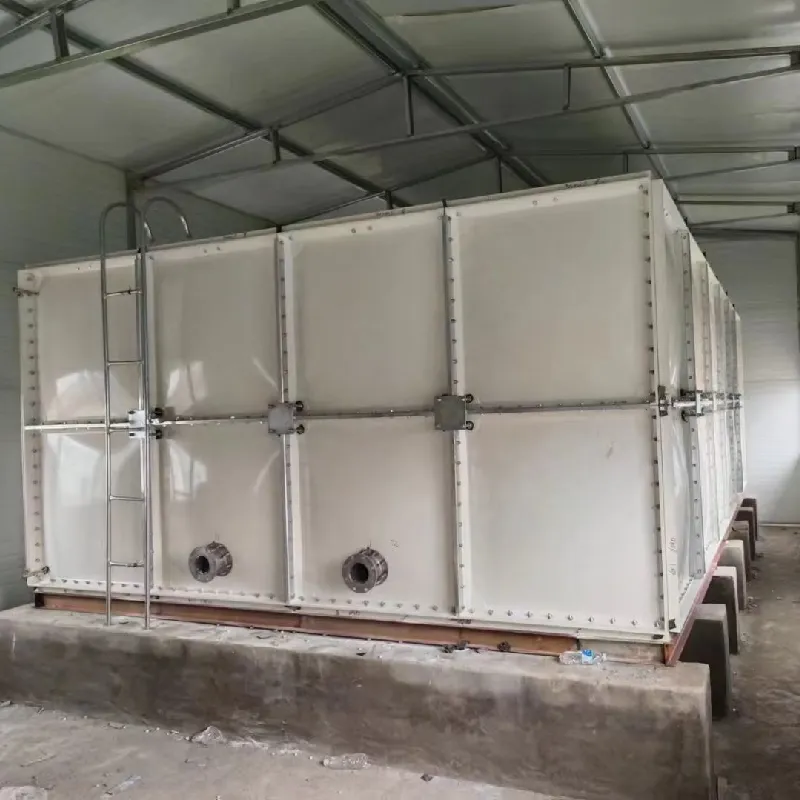loading...
- No. 9, Xingyuan South Street, Dongwaihuan Road, Zaoqiang County, Hengshui, Hebei, China
- admin@zjcomposites.com
- +86 15097380338
- Welcome to visit our website!
Using Fiberglass Grating for Enhanced Durability and Safety in Industrial Applications
The Benefits and Applications of Fibreglass Grating
Fibreglass grating, also known as fiberglass reinforced plastic (FRP) grating, has emerged as a versatile and durable solution for various industrial and architectural applications. Its popularity has increased significantly over the years, largely due to the unique properties and benefits it offers compared to traditional materials. In this article, we will explore the characteristics of fibreglass grating, its advantages, and its diverse applications in different sectors.
Characteristics of Fibreglass Grating
Fibreglass grating is composed of a matrix of glass fibers and thermosetting resins, making it lightweight yet incredibly strong. It can be manufactured in various shapes and sizes, with different surface textures to meet specific requirements. Typically, fibreglass grating comes in two main types molded grating and pultruded grating. Molded grating is produced through a molding process, creating a solid and robust structure. In contrast, pultruded grating is formed by pulling materials through a heated die, resulting in a more uniform and tighter grid.
The inherent properties of fibreglass grating include corrosion resistance, chemical resistance, UV stability, and non-conductivity, making it an ideal choice for environments that are harsh or require specific safety standards. Additionally, fibreglass grating is available in different colors and can be manufactured to provide slip-resistant surfaces, further enhancing its usability in various conditions.
Advantages of Fibreglass Grating
One of the main advantages of fibreglass grating is its lightweight nature. This characteristic simplifies installation and reduces labor costs compared to heavier materials like steel or concrete. Furthermore, its resistance to corrosion significantly decreases maintenance costs over time. Many industries, especially those in chemical processing, wastewater treatment, and marine environments, benefit immensely from the long lifespan of fibreglass grating.
The non-conductive nature of fibreglass grating also adds a layer of safety in environments where electrical hazards may be present. Workers can traverse fibreglass grating without the risk of electrical shock, making it a wise choice for power plants or areas with heavy electrical equipment.
Additionally, fibreglass grating is an environmentally friendly option. Unlike metal grates, it does not rust and, therefore, does not need to be replaced as frequently, thereby reducing waste. Many manufacturers also promote the recycling of fibreglass materials, further minimizing environmental impact.
fibreglass grating

Applications of Fibreglass Grating
The uses of fibreglass grating are nearly limitless, spanning various industries. Here are a few key applications
1. Industrial Flooring In factories and warehouses, fibreglass grating is frequently used for walkways, platforms, and stair treads. It can withstand heavy loads while providing a safe walking surface.
2. Wastewater Treatment Plants The corrosion resistance of fibreglass makes it ideal for use in environments exposed to chemicals and liquids. In wastewater treatment facilities, fibreglass grating is used for grating, walkways, and decking.
3. Chemical Processing In the chemical industry, fibreglass grating protects against spills and leaks due to its non-corrosive properties. It is used in storage areas, processing floors, and chemical transfer systems.
4. Marine Applications With its inherent resistance to saltwater corrosion, fibreglass grating finds applications in docks, piers, and marine vessels, ensuring safety and durability in aquatic environments.
5. Architectural Features Beyond industrial uses, fibreglass grating can also serve aesthetic purposes in architecture, providing an attractive yet functional element for walkways, balconies, and other structural components.
Conclusion
In summary, fibreglass grating is a highly effective solution for a wide range of applications, driven by its strength, durability, and resistance to corrosion and chemicals. With its lightweight composition and safety features, it's a preferred choice for industries where traditional materials may fall short. Whether in industrial settings, wastewater treatment facilities, or even contemporary architectural designs, fibreglass grating continues to prove its worth as a reliable and sustainable option that meets the demands of modern applications.
-
The Rise of FRP Profiles: Strong, Lightweight, and Built to LastNewsJul.14,2025
-
SMC Panel Tanks: A Modern Water Storage Solution for All EnvironmentsNewsJul.14,2025
-
GRP Grating: A Modern Solution for Safe and Durable Access SystemsNewsJul.14,2025
-
Galvanized Steel Water Tanks: Durable, Reliable, and Ready for UseNewsJul.14,2025
-
FRP Mini Mesh Grating: The Safer, Smarter Flooring SolutionNewsJul.14,2025
-
Exploring FRP Vessels: Durable Solutions for Modern Fluid HandlingNewsJul.14,2025
-
GRP Structures: The Future of Lightweight, High-Performance EngineeringNewsJun.20,2025
